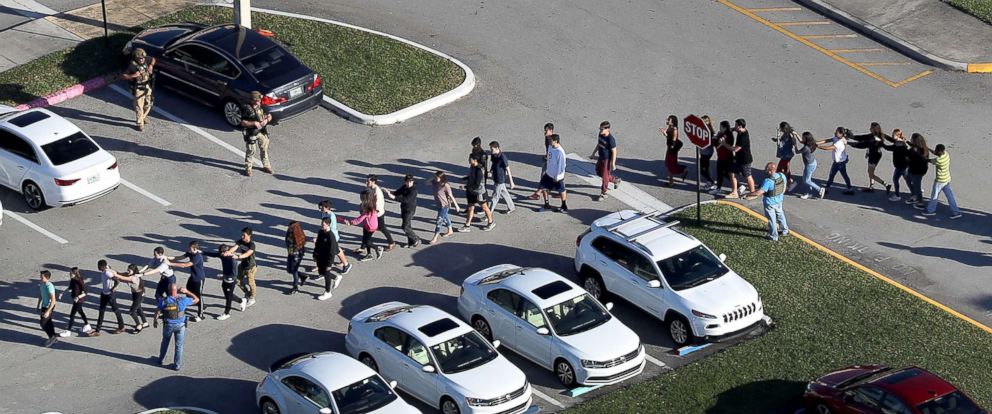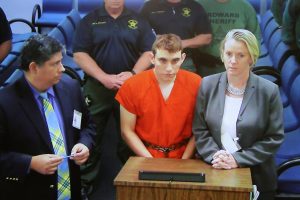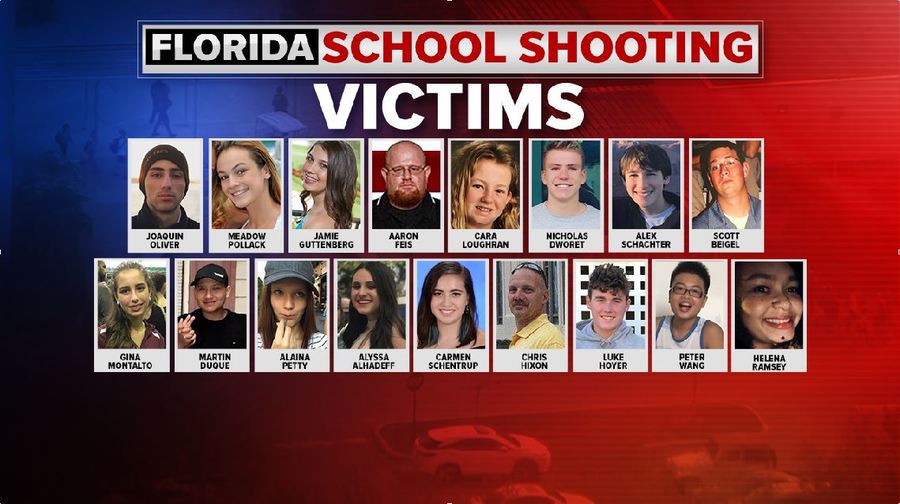Improved Mental Health Care Won’t Prevent Mass Shootings
Neither mental health care nor gun control measures will end mass shootings.
Posted Mar 27, 2018
With every school shooting, a chorus arises to highlight the link between mass killings and mental illness and to demand better mental health care as a common sense solution to the problem.

For one, it’s an encouraging sign when policymakers and the public look to psychological science for answers. When policymakers turn to psychology and call for improvements in mental health services, it is a sign of the field’s legitimacy and cultural ascendance. The call for better mental health also offers a rare point of agreement for the many factions in the American political space that are otherwise usually at odds. After all, who can be against better mental health services?
The fact that this chorus constitutes a cynical — and by now transparent — political feint aimed at steering the discussion away from the subject of guns is disappointing, but that does not automatically disqualify the proposed solution. The claim that better mental health services will lead to a reduction in gun massacres deserves consideration on its own merit.
It is indeed true that America needs better mental health services. A better mental health system, one where high-quality treatments are covered adequately by insurance, where mental health care is well integrated with the primary care system, where individuals are routinely screened for mental health risks, and where high-quality and affordable preventative and restorative care is normative and widely available — all that would be highly likely to help many people. A better mental health system would also help the economy by reducing the rates of lost productivity and by supporting vulnerable individuals through rough stretches in their lives, helping them avoid costly and risky crises and breakdowns. It would no doubt help families cope better with stress and their children succeed better in school. It would likely be particularly helpful for the many mentally ill individuals who are routinely victims of violence.

Nikolas Cruz (C) appears via video monitor with Melisa McNeill (R), his public defender, at a bond court hearing after being charged with 17 counts of premeditated murder, in Fort Lauderdale, Florida, U.S., February 15, 2018. REUTERS/Susan Stocker/Pool
Alas, one thing an improved mental health system would not be likely to do is preventing school shootings(link is external).
In fact, the familiar narrative whereby calls for better mental health crop up immediately after a mass murder is unhelpful in solving the gun violence crisis, and it may do more harm than good for the mentally ill. Associating mental illness with mass murder serves mainly to increase the stigma already plaguing mental illness. Statistically, mental illness is a poor predictor of violent behavior. The notion that mental illness causes mass shootings serves to further stereotype a large, diverse, and largely nonviolent, law-abiding population of people diagnosed with psychiatric condition.
It is telling in this context that we don’t hear calls for better mental health programs when a mentally ill person is killed by police or otherwise victimized — both of which are far more common than violence the other way around. In fact, the severely mentally ill are much more justified in fearing us than we are in fearing them. It would be heartening, and more appropriate, if calls for better mental health arose in the wake of publicized success stories — such as the recent story of Michael Weinstein(link is external), M.D., a surgeon who overcame severe depression; or Brad Stulberg(link is external), a peak performance expert who survived a struggle with debilitating anxiety; or the psychologist Marsha Linehan(link is external), who survived her own early battle with borderline personality disorder to become an expert on the disorder, devising a highly effective therapy approach for dealing with it; or Dr. Elyn Saks(link is external), a professor at the University of Southern California School of Law, who has managed to remain productive while dealing with schizophrenia; etc.
Second, the call for mental health solutions to gun violence, in addition to being an excuse to avoid a serious discussion of gun regulations, also serves to mask — and mute an open discussion of — the sociocultural undercurrents that shape our views of violence, mental health, and guns. This becomes clear when you try the following thought experiment: If all the recent school shooters were Muslim Americans, would the president be calling for a mental health solution for the problem? If the shooters attacked a school in a majority black neighborhood, would the NRA advocate fiercely for arming African-American citizen protection militias?
Third, most mass shooters do not have a mental health diagnosis; research has not yet established a clear link between a psychiatric diagnosis and mass murder. The common characteristics of many mass shooters do not fall under the rubric of mental illness. Rage is not a mental illness, and loneliness is not a formal diagnosis. Neither is an interest in weaponry, nihilism, moral confusion, homophobia, or the revenge motive emerging from the perception of being victimized and wronged — all common in these cases(link is external). In fact, factors other than mental illness are far better predictors of gun violence, including being male, using drugs and alcohol, a history of childhood abuse, and, of course, the availability of guns.

On the individual level, those who propose better screening, treatment, and involuntary confinement measures for the mentally ill forget (or do not know) that psychological science is far from being able to predict the future behavior of an individual person with any consistency and accuracy. In other words, I can tell you that more suicides will happen in a group of severely depressed people than in a group of non-depressed individuals, all else being equal. But I cannot tell you which of the depressed people will commit suicide. We are particularly bad at predicting extreme, low-prevalence behaviors, such as a mass shooting. Research has shown persistently that clinical judgment in those circumstances is no better than flipping a coin.

Moreover, it is a known problem in predictive science that an attempt to predict a rare event will inevitably produce many so-called “false positives.” In other words, whatever characteristics define school shooters — lonely, white, paranoid, angry, psychotic, outcast, misogynistic, depressed etc. — are quite common in the population at large, and the overwhelming majority of people with one or all of these problems will never become violent mass murderers, whether or not they are treated. Thus, preventative steps regarding low prevalence phenomena are difficult to undertake without harming many innocent people in the process.

If you label, hospitalize by force, or otherwise curtail the movement of all who fit the profile of a shooter, you will, by definition, mostly be labeling, committing, and harassing innocent, harmless, law-abiding people. This is unfeasible in a society that prizes individual freedom. Moreover, descending on troubled individuals and labeling them potential mass killers may do more harm than good by confirming their nascent paranoid ideas of persecution, thus provoking further marginalization, indignation, isolation, and with that, increasing potential risk.

In addition, mental health support is only effective under certain conditions: As the old joke goes, it takes several psychologists to change a light bulb, but the light bulb has to want to change. The patient needs to recognize that they have a problem, be motivated to heal, and be able to develop a trusting relationship with the therapist. None of these necessary preconditions for success in therapy are likely to be met in the case of mass killers.
Mass shooters tend to see the problem as residing in others, not in themselves. Thus they are unlikely to trust a therapist who insists on self-reflection and unlikely to confess to their true plans and fantasies. Mass shootings are not spontaneous spasms of rage or lunacy. They are by and large well planned in advance, meticulously prepared for, and deliberately targeted to familiar persons (or to specific categories, such as Jews, blacks, women, etc.). For those who plan to carry out mass murder, staying off the mental health system radar, refusing help, and denying illness are bound to be preferred strategies.

Ironically, the same limitations that hinder the efficacy of mental health solutions in reducing mass killings are also likely to hinder the efficacy of gun control measures in achieving the same goal. On the aggregate level, most gun owners are not mass killers and are undeserving of being stigmatized as such.
On the individual level, mass murder is an extremely rare behavior, and predicting which gun owner will commit mass murder is quite impossible without creating a vast population of “false positives,” who will be stigmatized, arrested, or whose freedom will be curtailed in other ways through no fault of their own. As with mental health, gun control measures will require cooperation to succeed but are unlikely to inspire it. The paranoia and distrust of vulnerable gun owners are likely to increase in the face of even well-intentioned efforts at gun control, making for a more rather than less lethal potential.

There are, however, several notable differences between the two sides of this equation. First, while not all mass murderers have a mental illness, all mass murderers, by definition, have guns. People can, and most often do, commit a mass shooting without being mentally ill. They cannot commit a mass shooting without some kind of gun. In other words, while mental illness is neither sufficient nor necessary for committing mass murder, gun ownership, while insufficient, is necessary.
Second, gun owners as a group are powerful, while the mentally ill are more often powerless. Dumping responsibility for social problems on the powerless while shielding the powerful from responsibility often amounts to a convenient “blame the victim” approach that may serve the interests of the powerful, but not the interests of justice, peace, or the nation as a whole.
Third, scholarly research into the effects of mental illness is flourishing and well funded by government agencies, which is right and reasonable. Research into the effects of gun ownership, availability, access, and control is governmentally defunded by law and practically forbidden in the U.S., which is wrong and defies reason.
Fourth, while both mental illness and guns connote a threat in the minds of many people, only guns have also come to denote an identity, an ideological signifier in America. For many, a gun is never just a gun in the same way that a flag is never just a piece of cloth. Thus, while a discussion of mental illness can be just that, the discussion of guns often derails into something else, less empirically and more ideologically driven.
Fifth, while rates of mental illness in America are somewhat higher(link is external) than in other parts of the world, rates of gun ownership — 270 million guns owned by civilians — far exceed(link is external) all other countries.
These differences suggest, if nothing else, that looking at the problem of mass shootings solely through the lens of mental illness without considering the effects of gun ownership, availability, lethality, and safety is a dishonest and misguided approach.
Just as mass shootings involve a tiny percentage of the mentally ill, and represent a small part of the societal toll of mental illness, so do mass shootings comprise but a tiny percentage of gun violence in the U.S., and represent a small part of the societal toll of gun violence. Likewise, just as steps to shore up the mental health system are likely to improve a lot of many people, even if they fail to halt mass shootings, so will considered steps to improve gun safety, education, and control help save many lives, even if they are unlikely to eliminate(link is external) the occurrence of mass shootings.



